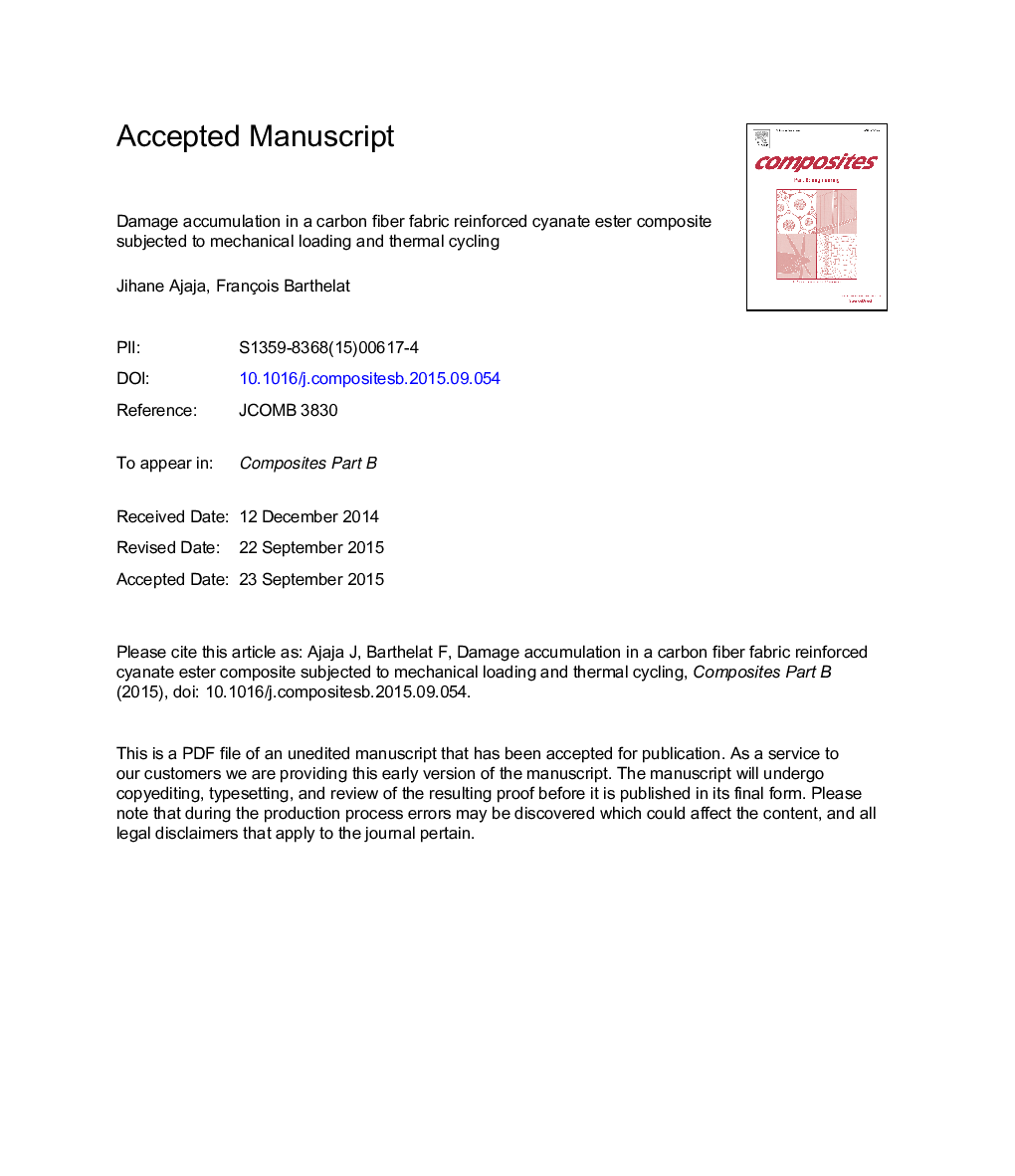| Article ID | Journal | Published Year | Pages | File Type |
|---|---|---|---|---|
| 7212952 | Composites Part B: Engineering | 2016 | 20 Pages |
Abstract
Carbon fiber reinforced cyanate ester composites are of interest for space structural applications because of their high specific strength and stiffness, but also for their dimensional stability and resistance to microcracking. This new type of composite materials is promising, but so far experimental data remains scarce. In this work we have characterized the microcracking behavior of a cyanate ester composite, focusing on the conditions under which microcracking initiates. The performance of these composites for space applications was investigated by focusing on the accumulation of damage from extreme thermal and externally applied stresses. For this purpose, a five-harness satin weave in [0/45]s was subjected to micromechanical testing in three point bending. Microdamage accumulating during monotonic loading was monitored by in-situ imaging, and we also show that cyclic tests of increasing amplitude can detect such damage. We also subjected the material to cyclic thermal stress using thermomechanical and dynamic mechanical analyzers (TMA and DMA) and a fast thermal cycling method. For these tests, no variation in the coefficient of thermal expansion (CTE) or degradation in modulus from thermal cycling under TMA and DMA, and no microcracking could be detected from visual inspection. However, faster thermal cycling resulted in the formation of microcracking and a significant reduction in modulus. These results suggest a possible failure mode for this type of material, which should be taken into consideration for aerospace applications.
Related Topics
Physical Sciences and Engineering
Engineering
Engineering (General)
Authors
Jihane Ajaja, François Barthelat,
